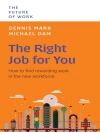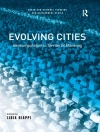For the century of approximately 1870 through 1970, America’s ongoing industrialization brought growing prosperity to much of its citizenry and, after World War II, created a broad middle-class society. After the mid-1970s, however, de-industrialization or the movement of manufacturing production to other countries resulted in growing economic and social stress on many of the working class who did not possess a college education. Donald Trump was the first major U.S. politician to recognize this problem and promise to create "good jobs" for working-class Americans. Yet, his most dramatic policy initiatives in the areas of trade, immigration, and deregulation did not produce dramatic change during his first term. A more positive trend is bubbling up from state and local governments, with the encouragement (but not funding) from the Trump administration. This is the growing importance of workforce development programs, which seek to develop the skills necessary for America’s 21st century economy through education reform, industrial apprenticeships, and tax incentives. Does the future of the national economy rest in safe arms with the new re-industrialization strategy and education reform? States and local governments must ascertain what mix of higher education reform, k-12 reform, career readiness, and high-tech training is the best equation for the growing workforce deficit and waning middle-class. In addition, education reform must consider high-tech automation, robotics, and artificial intelligence as a curriculum component in education reform. This policy area must be constructed in ways that not only broadens the middle-class but helps the victims of deindustrialization and reindustrialization. Chapter 1 provides an overview of the challenges facing the working class in the United States and an outline of the book. Chapter 2 describes the stage of industrialization (1870-1970) that created a middle-class society. Chapter 3 discusses the periods of deindustrialization (1970-2000) and reindustrialization in advanced manufacturing (early 21st century). Chapter 3 then analyzes the causes (globalization, organizational change, public policy, business strategy, and automation) and consequences (the emergence and shrinkage of a broad middle-class society) of the changing dynamics of industrialization. Chapter 4 presents a case study from the state of Alabama, demonstrating how manufacturing reduces inequality. Chapter 5 discusses how work-based learning programs promote racial diversity. Chapter 6 investigates modern apprenticeship and work-based learning programs. Finally, Chapter 7 considers the implications of this study and argues that workforce development policies hold the key to American prosperity in the 21st century.
Cal Clark
Workforce Development: The Key to Prosperity in the 21st Century [PDF ebook]
Workforce Development: The Key to Prosperity in the 21st Century [PDF ebook]
¡Compre este libro electrónico y obtenga 1 más GRATIS!
Idioma Inglés ● Formato PDF ● Páginas 176 ● ISBN 9781536188417 ● Editorial Nova Science Publishers, Inc. ● Publicado 2020 ● Descargable 3 veces ● Divisa EUR ● ID 8062358 ● Protección de copia Adobe DRM
Requiere lector de ebook con capacidad DRM












